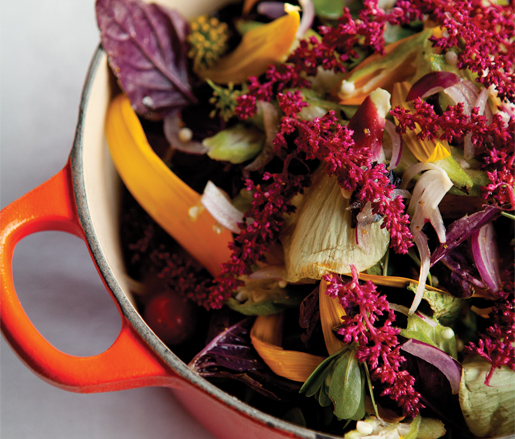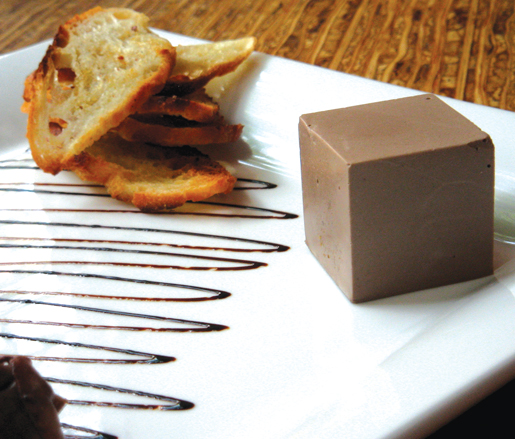
No longer sidelined, produce is having its moment.
“Pretty disheartening” is how Amanda Cohen described the limp, bland roasted vegetables placed in front of her at some of New York City’s top tables in the early aughts. Though at the time farmers’ markets and Whole Foods were busy making kohlrabi and rainbow chard mainstream, most restaurants had yet to embrace plant-centered cooking.
“If someone was a vegetarian,” recalls New York–based food critic Ryan Sutton, who was a waiter during this same period, “you either gave them pasta or the chef put together a couple of side dishes, called it a main course, and charged $18.”
Fast-forward directly to 2014 and vegetable menus aren’t just for vegetarians anymore. Among adventurous epicures, cauliflower steaks are as much in demand as aged rib-eyes, and you can blow your paycheck on a vegetable tasting menu at any number of the country’s top restaurants.
In 2008, when Cohen opened her vegetarian restaurant, Dirt Candy, in New York City, vegetarian dining still conjured visions of hippies hunched over tempeh, not stylish eateries serving immaculate kabocha squash. Following in the footsteps of vegetable-promoting pioneers like Charlie Trotter, Alice Waters, and Gray Kunz, Cohen helped redefine the genre: faux meats, then the norm at vegetarian restaurants, would be verboten at Dirt Candy, while vegetables—in unconventional presentations such as smoked broccoli hot dogs—would get the spotlight.
Even as the number of vegetarians and vegans continues to skyrocket, the current spike in vegetable-forward dishes on menus is not attributable solely to a rise in meat-shunners, but also to a reimagining of vegetables by chefs—and even the media. Chefs like Cohen are treating vegetables with an esteem formerly reserved for proteins. And most of her customers aren’t eating her Portobello mushroom mousse or salt-roasted beets in green curry because the dishes are healthy; they’re eating them because they’re delicious.

Dirt Candy’s popular portobello mushroom mousse isn’t just for vegetarians.
Need more evidence of the culinary cognoscenti’s growing passion for produce? It was recently announced that Jean-Georges Vongerichten will open ABC Home Grown, serving vegetarian and vegan cuisine in New York City’s ABC Carpet & Home complex.
But vegetable-focused doesn’t necessarily mean vegetarian. In California, Sutton points to chefs like Dominique Crenn of Atelier Crenn in San Francisco, David Kinch of Manresa in Los Gatos, and Christopher Kostow of the Restaurant at Meadwood in St. Helena who are making plant-based dishes that may include meat, or what Sutton refers to as “protein-accented vegetables.”
“Most of our vegetable dishes have some kind of meat component,” says Dan Barber of Blue Hill in New York City and Blue Hill at Stone Barns. Barber believes that meat should still be a vegetable’s thoughtfully integrated companion, not the other way around. “Because we’re using whole animals, we’re always fighting to use these lesser scrap cuts, but they end up adding incredible flavor and depth to vegetables.”
But are diners willing to pay entrée prices for items once relegated to a garnish?
“There’s a gross misconception that vegetables are cheap,” explains David Kinch, who has an exclusive relationship with nearby Love Apple Farms, the sole source of Manresa’s lush produce.“It cracks me up when people say I must be saving so much money to have my vegetables grown at the farm, when it costs me three times more than if I called a produce company,” he says, adding, “To prepare vegetables respectfully, reverently, and for them to take center stage on a plate requires just as much time and labor as fish.”
Kristy Del Coro of New York City’s Belgian import Rouge Tomate agrees that vegetables require more careful attention than many think. “Like nose-to-tail cooking with meats, our focus is using all parts of fruits and vegetables to achieve different flavors, textures, and maximum nutrition,” she says.
If anyone can change the perceived value of an ingredient, it’s the pros. “Chefs are de facto vegetable brand ambassadors,” says Sara Brito, a Colorado-based brand and marketing strategist. “If chefs didn’t value truffles, would we?”
And if chefs are devoted to taste, says Sutton, customers will fork over more money than they are accustomed to paying for vegetables. Daring diners are as excited to sample singular flora as they were to try beef cheeks and marrow a decade ago. “We’ve all tried pork belly and quail eggs,” he says, “but we haven’t all tried Vietnamese coriander and ice lettuce that tastes like velvet.”
Alia Akkam is a New York–based food, drink, travel, and design writer.




-57 web.jpg)


